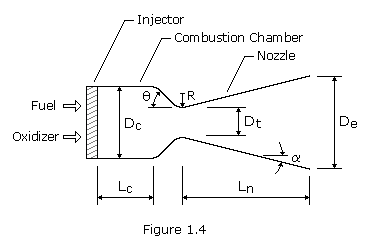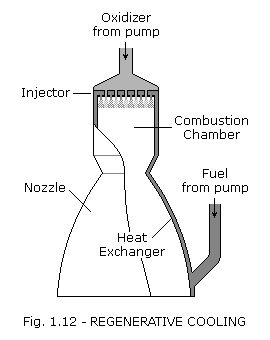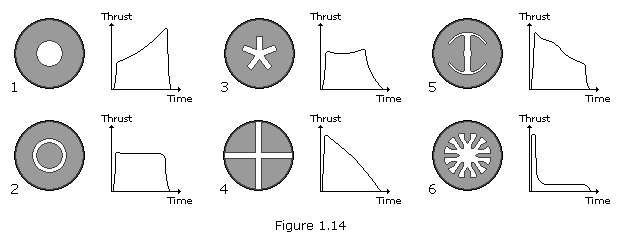A rocket engine consists of a nozzle, combustion chamber, and injector. The combustion chamber is where the burning of the propellant takes place. It has high pressure and temperature. The chamber must be strong enough to withstand immense pressure and long enough to ensure complete combustion. The nozzle accelerates the hot gases created in the combustion chamber. This converts chemical-thermal energy to kinetic energy. The highest performing nozzles are bell-shaped. The injector is very important for rocket performance. It injects propellant, closes the chamber, and other tasks involved with combustion and cooling.
Combustion is a chemical reaction known as oxidation. Throughout the process, mass remains the same because of the Law of Conservation of Mass. Mixture ratio is the ratio of the flow rate of oxidizer to the flow rate of fuel. An optimum mixture ratio typically leads to a higher specific impulse. The combustion process causes the separation of molecules into simpler constituents (dissociation). High chamber temperature and pressure and low exhaust gas weight results in high ejection velocity and thrust.
Some heat from the combustion chamber is transferred to the chamber walls. The most common cooling method is regenerative cooling, where coolant flows over the back of the chamber and is discharged into the injector and used as propellant.
Solid, liquid, and nuclear rockets are all chemical rockets.
In solid rockets, “fuel and oxidizer are mixed together into a solid propellant which is packed into a cylinder” (Solid Rocket Engine). The combustion chamber is a hole through the cylinder. Combustion of the fuel takes place on the propellant’s surface. This creates a flame front, which burns into the propellant. This process creates copious amounts of exhaust, high temperature, and great pressure. Their geometry determines surface area and burn pattern. The exhaust accelerates through the nozzle and creates thrust.
Unlike turbine engines and propellers, which rely on the atmosphere for oxygen, rockets work in a vacuum (such as space). This is because the oxidizer is mixed with the propellant.
In liquid rockets, fuel and oxidizer are stored in the engine. Then, they are both pumped into the combustion chamber, where they are mixed and burned. The exhaust flows through the nozzle and creates thrust. The amount of thrust depends on “the mass flow rate through the engine, the exit velocity of the exhaust, and the pressure at the nozzle exit” (Liquid Rocket Engine). These variables are all dependent on the nozzle design. Liquid rockets can also create thrust in a vacuum because oxidizer is carried on board.





No comments:
Post a Comment